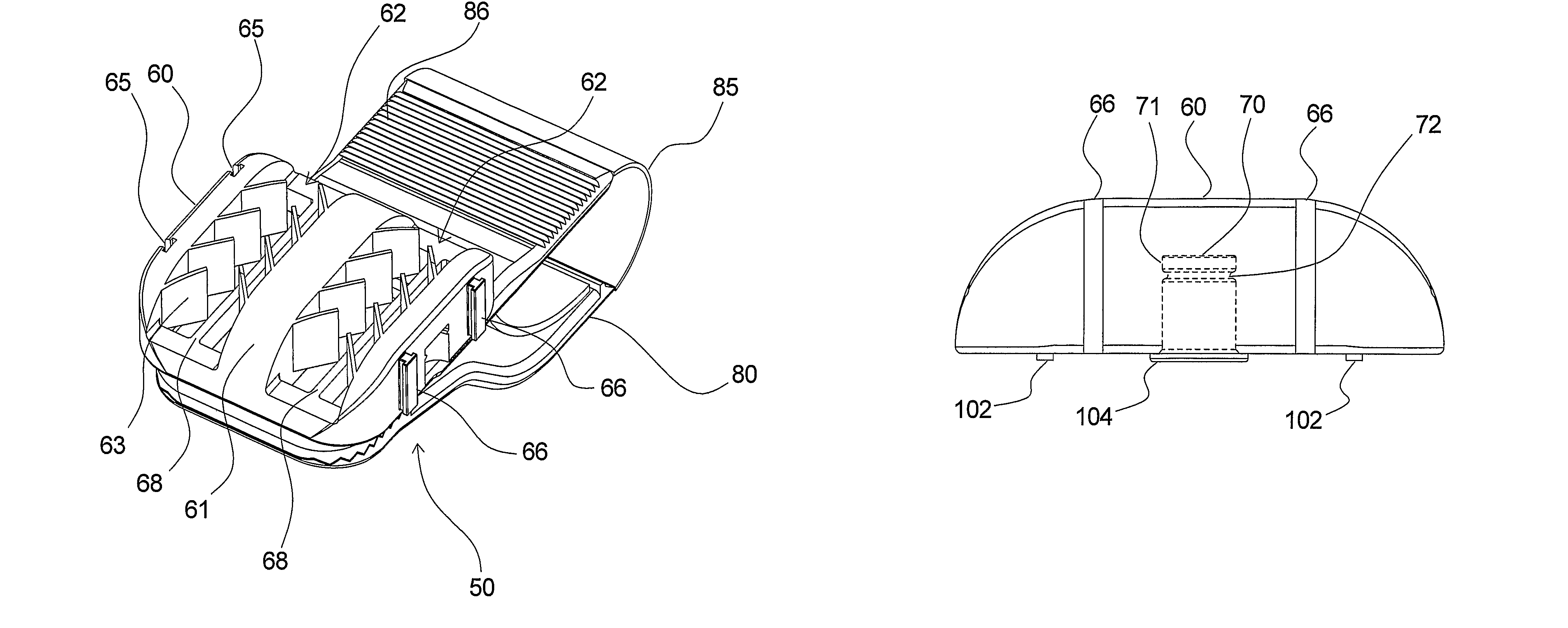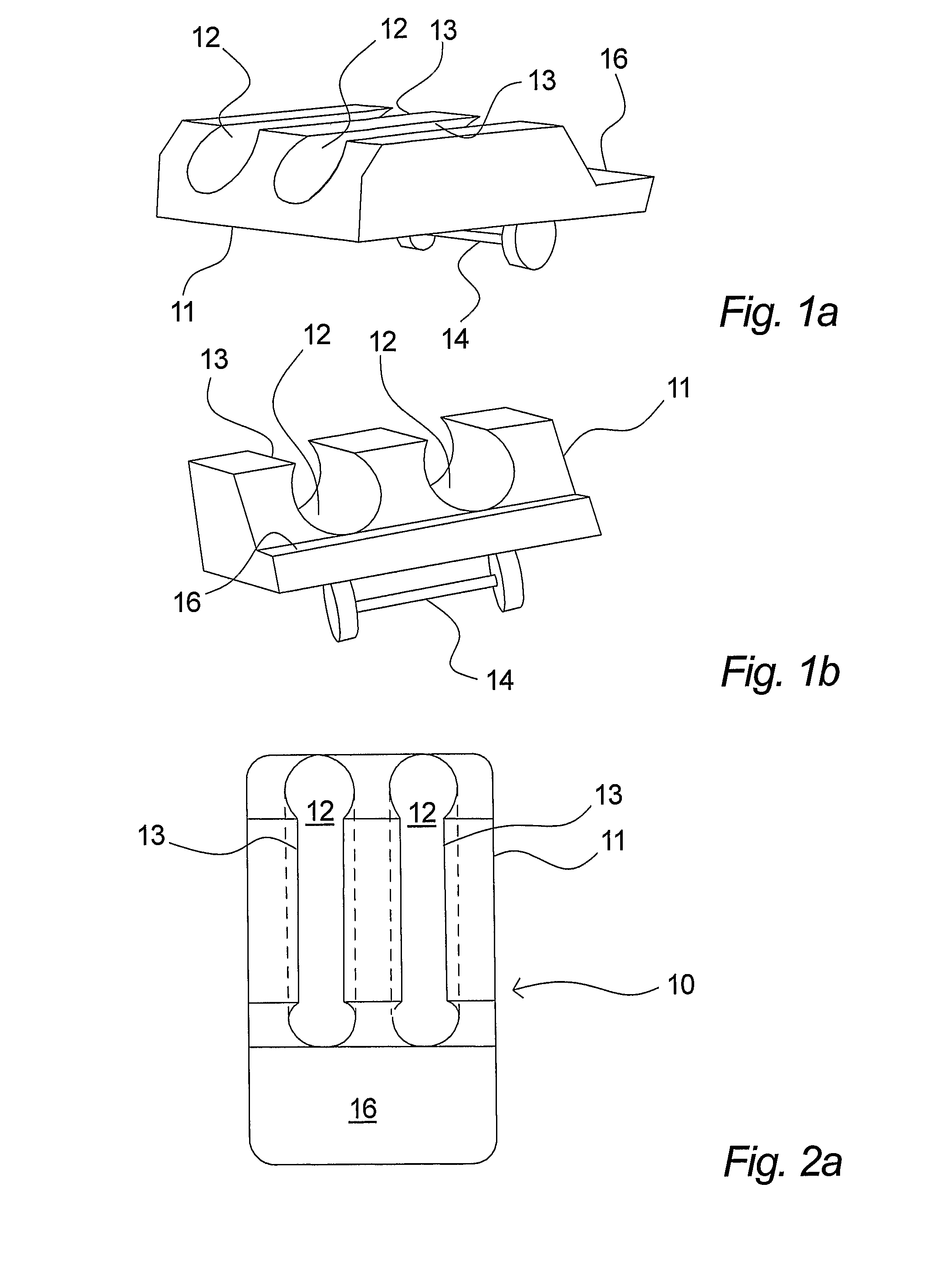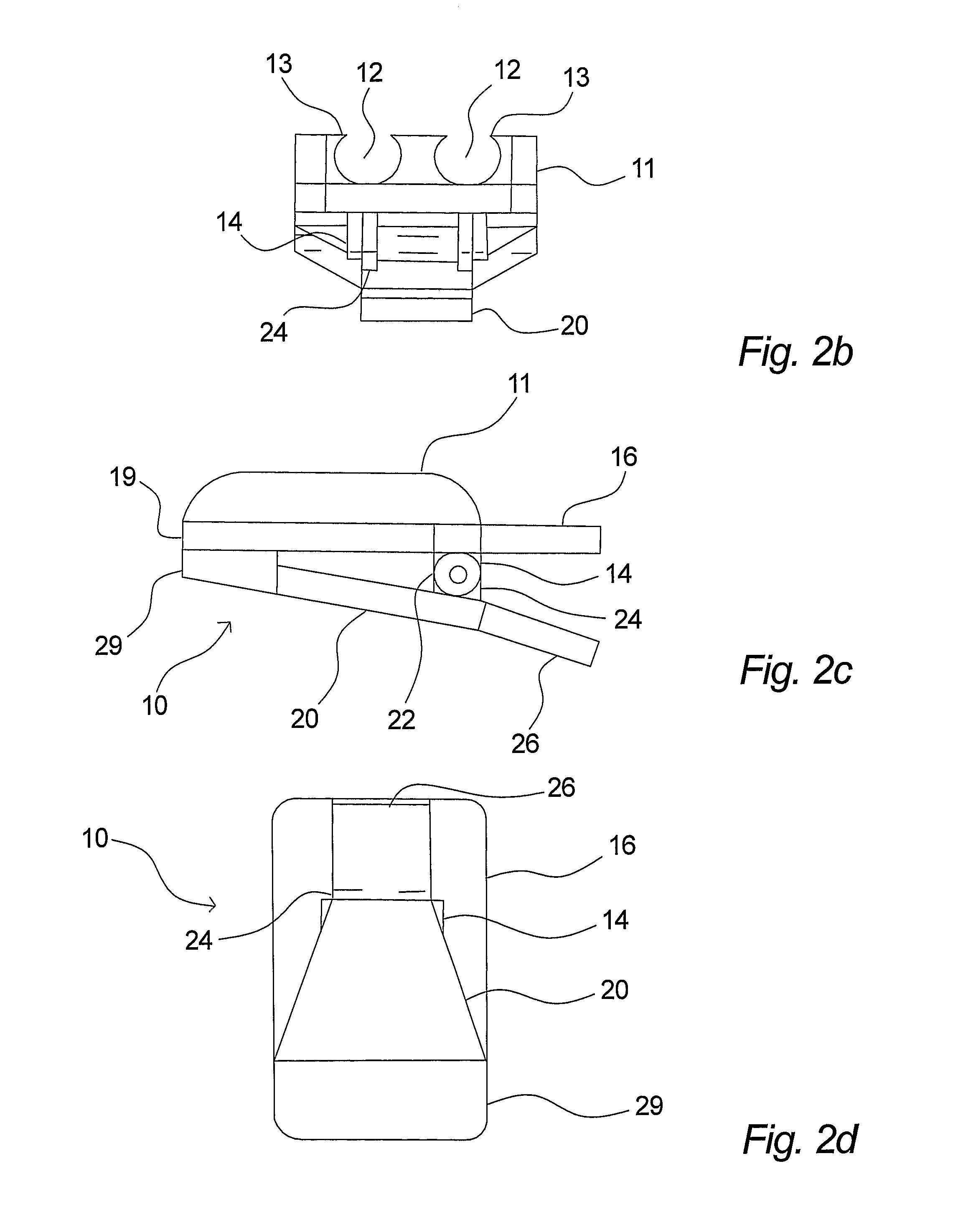Medical securing device
a technology for securing devices and medical devices, which is applied in the direction of infusion needles, building scaffolds, domestic objects, etc., can solve the problems of difficult handling of surgical tapes by nurses and other medical staff persons, less than secure fixation of catheters to patients, and dangerous situations, so as to facilitate the parking of the line retaining part, the effect of easy relation
- Summary
- Abstract
- Description
- Claims
- Application Information
AI Technical Summary
Benefits of technology
Problems solved by technology
Method used
Image
Examples
Embodiment Construction
[0118]In FIGS. 1a to 2d a first embodiment of a securing device 10 according to the invention is shown. These drawings as well as the rest of the drawings are for illustrative purposes only and the actual size of the device as well as the proportions may differ from the illustrations of the drawings, which will be obvious. The securing device is generally designated 10 and comprises a line retaining part 11 and a base part 20. The line retaining part 10 comprises two line retaining grooves 12 in the embodiment shown, but it is noted that the line retaining part 10 may comprise only one such groove 12 and that it may comprise more than two grooves, e.g. three, four, five or more. As it will be explained in detail further on, such a groove 12 may serve to hold or retain elongated elements such as lines in the form of tubes, catheters, wires etc. that may be used in different applications in particular in the medical field. The groove or grooves are adapted for releasably holding lines...
PUM
 Login to View More
Login to View More Abstract
Description
Claims
Application Information
 Login to View More
Login to View More - R&D
- Intellectual Property
- Life Sciences
- Materials
- Tech Scout
- Unparalleled Data Quality
- Higher Quality Content
- 60% Fewer Hallucinations
Browse by: Latest US Patents, China's latest patents, Technical Efficacy Thesaurus, Application Domain, Technology Topic, Popular Technical Reports.
© 2025 PatSnap. All rights reserved.Legal|Privacy policy|Modern Slavery Act Transparency Statement|Sitemap|About US| Contact US: help@patsnap.com



